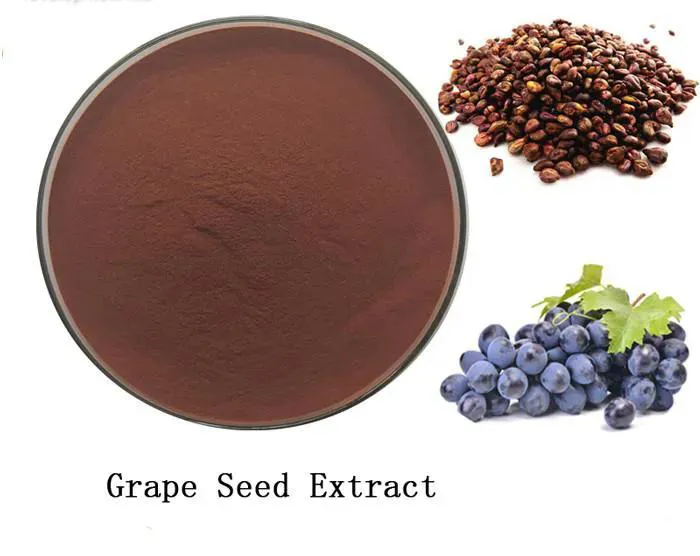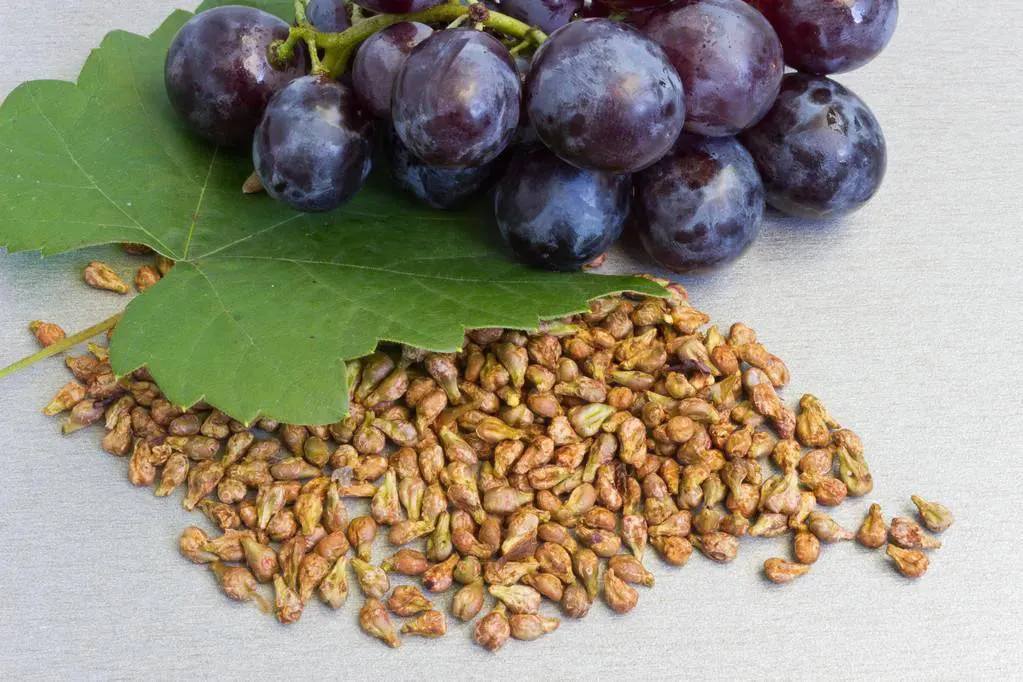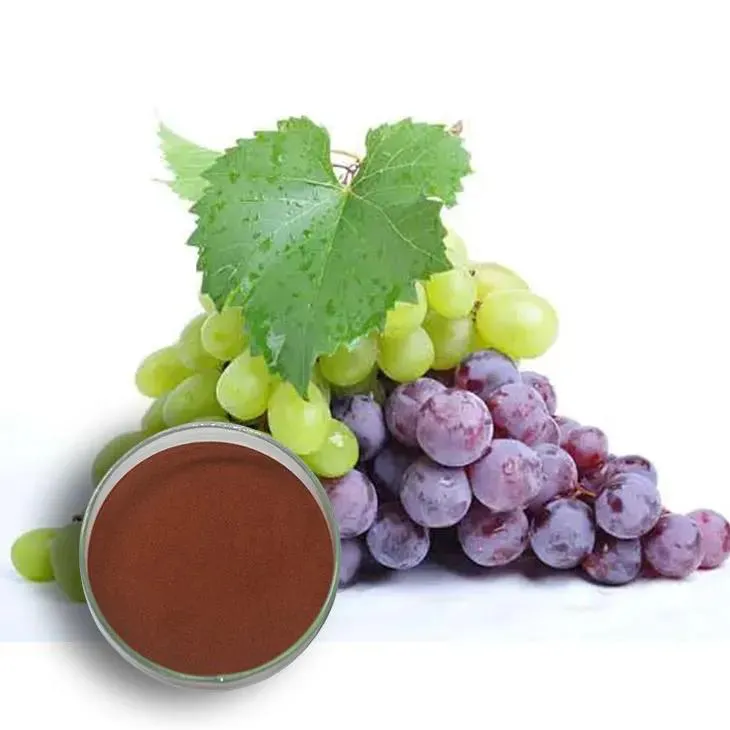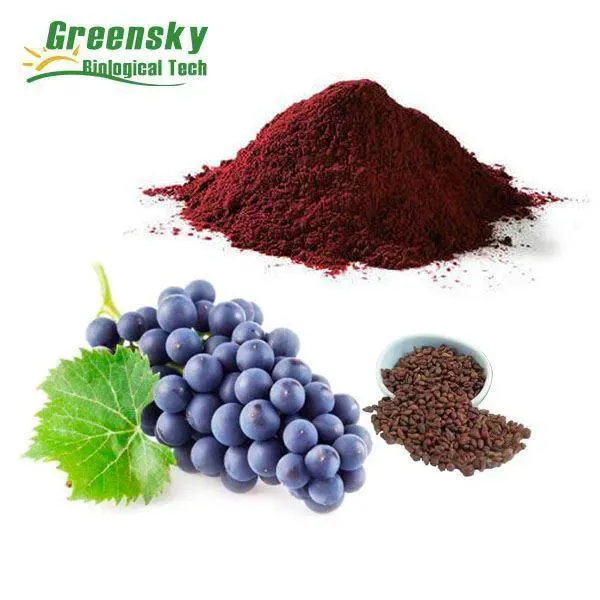- 0086-571-85302990
- sales@greenskybio.com
Balancing the Benefits: Potential Side Effects of Red Grape Seed Extract
2024-08-16

1. Introduction
Red Grape Seed Extract has gained significant popularity in recent years due to its purported health benefits. It is rich in antioxidants, particularly proanthocyanidins, which are believed to have a wide range of positive effects on the body. These include anti - inflammatory properties, potential cardiovascular benefits, and skin health improvements. However, like any supplement, it is not without potential side effects. Understanding both the benefits and the possible adverse effects is crucial for making informed decisions about its use.

2. Health Benefits of Red Grape Seed Extract
2.1 Anti - Inflammatory Effects
The antioxidants in red Grape Seed Extract have been shown to reduce inflammation in the body. Chronic inflammation is associated with a variety of diseases, such as arthritis, heart disease, and certain cancers. By reducing inflammation, red grape seed extract may play a role in preventing or managing these conditions. For example, in arthritis, it may help to relieve joint pain and stiffness by decreasing the inflammatory response in the joints.
2.2 Cardiovascular Benefits
Red grape seed extract may have positive effects on the cardiovascular system. It can potentially lower blood pressure, improve blood lipid profiles by reducing LDL (bad) cholesterol and increasing HDL (good) cholesterol, and also has anti - platelet properties, which can help prevent blood clot formation. These effects combined may reduce the risk of heart attacks and strokes.
2.3 Skin Health
The antioxidants in the extract can also benefit the skin. They help to protect the skin from damage caused by free radicals, which are responsible for premature aging, wrinkles, and dull skin. Red grape seed extract may also improve skin elasticity and hydration, making it a popular ingredient in many skincare products.

3. Potential Side Effects of Red Grape Seed Extract
3.1 Gastrointestinal Disturbances
One of the most common side effects reported with red grape seed extract is gastrointestinal issues. This can include nausea, vomiting, diarrhea, and abdominal pain. These symptoms may occur due to the extract's effect on the digestive system. For some individuals, especially those with sensitive stomachs, the high concentration of active compounds in the extract may be irritating to the gastrointestinal tract.
3.2 Allergic Reactions
Allergic reactions to red grape seed extract are possible, although relatively rare. Symptoms can range from mild, such as skin rashes, itching, and hives, to more severe reactions like difficulty breathing and swelling of the face, lips, or tongue in extreme cases. Those with known allergies to grapes or other related fruits should be especially cautious when considering the use of red grape seed extract.
3.3 Interaction with Medications
- Red grape seed extract may interact with certain medications. For example, it has anti - platelet properties, which means it can increase the risk of bleeding when combined with anticoagulant medications such as warfarin or aspirin. This interaction can lead to excessive bleeding, which can be a serious health risk.
- It may also interact with medications that are metabolized by the liver. The compounds in the extract can potentially affect the liver enzymes responsible for metabolizing drugs, leading to altered drug levels in the body. This can either reduce the effectiveness of the medication or increase the risk of side effects.

4. Impact on Different Body Systems
4.1 Nervous System
There is some evidence to suggest that in high doses, red grape seed extract may have an impact on the nervous system. Some individuals have reported symptoms such as dizziness, headaches, and nervousness. However, more research is needed to fully understand the relationship between the extract and the nervous system.
4.2 Endocrine System
While not well - established, there are concerns that red grape seed extract may potentially interfere with the endocrine system. This could affect hormonal balance in the body, but at present, there is limited research on this aspect. It is an area that requires further investigation to determine if there are any real - world implications for human health.

5. Differences in Individual Responses
Individual responses to red grape seed extract can vary widely. Factors such as age, overall health status, diet, and genetic factors can all play a role in determining whether an individual experiences benefits or side effects. For example, younger, healthier individuals may be more likely to tolerate the extract well and experience only the positive effects. On the other hand, older individuals or those with pre - existing health conditions may be more susceptible to side effects.
Genetic factors can also influence how the body processes the active compounds in red grape seed extract. Some people may have genetic variations that make them more or less sensitive to the effects of the extract, both positive and negative.
6. Recommended Dosage and Precautions
The recommended dosage of red grape seed extract can vary depending on the intended use and the individual. In general, it is advisable to start with a low dose and gradually increase it while monitoring for any adverse effects. Most supplements recommend a daily dose in the range of 100 - 300 mg.
- Precautions: Pregnant and breastfeeding women should avoid using red grape seed extract as there is not enough evidence to determine its safety during pregnancy and lactation.
- Before starting to use red grape seed extract, individuals should consult with their healthcare provider, especially if they are taking medications or have underlying health conditions.
7. Conclusion
Red grape seed extract offers a range of potential health benefits, particularly in the areas of anti - inflammation, cardiovascular health, and skin health. However, it is important to be aware of the potential side effects, including gastrointestinal disturbances, allergic reactions, and interactions with medications. Individual responses can vary, and it is crucial to follow recommended dosages and take appropriate precautions. By carefully balancing the benefits and risks, individuals can make more informed decisions about whether or not to incorporate red grape seed extract into their health regimens.
FAQ:
What are the main health benefits of red grape seed extract?
Red grape seed extract is rich in antioxidants, such as proanthocyanidins. These antioxidants can help fight against free radicals in the body, which may reduce the risk of chronic diseases like heart disease and cancer. It may also have anti - inflammatory properties, which can be beneficial for conditions related to inflammation such as arthritis. Additionally, it may improve blood circulation and skin health.
What are the potential side effects of red grape seed extract on the digestive system?
Some people may experience digestive issues such as nausea, vomiting, or diarrhea when taking red grape seed extract. This could be due to individual sensitivities or taking too high a dose. However, these side effects are not common and usually occur in a relatively small number of people.
Can red grape seed extract interact with medications?
Yes, it can. Red grape seed extract may interact with blood - thinning medications, such as warfarin. Since it may have blood - thinning properties itself, taking it together with these medications could increase the risk of bleeding. It's also possible that it may interact with other medications, so it's important to consult a doctor before starting to take red grape seed extract if you are on any medications.
Are there differences in individual responses to red grape seed extract?
Definitely. Just like with many supplements, individual responses to red grape seed extract can vary widely. Some people may tolerate it very well and experience only positive effects, while others may be more sensitive and experience side effects even at relatively low doses. Factors such as age, overall health, and genetic makeup can all play a role in these individual differences.
How should one take red grape seed extract to minimize potential side effects?
To minimize potential side effects, it's advisable to start with a low dose and gradually increase it if necessary. Also, it's important to follow the recommended dosage instructions on the product label. If any side effects occur, stop taking it immediately and consult a healthcare professional. Pregnant or breastfeeding women should be especially cautious and consult their doctor before taking red grape seed extract.
Related literature
- The Effects of Red Grape Seed Extract on Human Health: A Review"
- "Red Grape Seed Extract: Benefits, Side Effects, and Precautions"
- "Potential Interactions between Red Grape Seed Extract and Medications"
- ▶ Hesperidin
- ▶ Citrus Bioflavonoids
- ▶ Plant Extract
- ▶ lycopene
- ▶ Diosmin
- ▶ Grape seed extract
- ▶ Sea buckthorn Juice Powder
- ▶ Fruit Juice Powder
- ▶ Hops Extract
- ▶ Artichoke Extract
- ▶ Mushroom extract
- ▶ Astaxanthin
- ▶ Green Tea Extract
- ▶ Curcumin
- ▶ Horse Chestnut Extract
- ▶ Other Product
- ▶ Boswellia Serrata Extract
- ▶ Resveratrol
- ▶ Marigold Extract
- ▶ Grape Leaf Extract
- ▶ New Product
- ▶ Aminolevulinic acid
- ▶ Cranberry Extract
- ▶ Red Yeast Rice
- ▶ Red Wine Extract
-
Kidney Bean Extract
2024-08-16
-
Dandelion Leaf Extract
2024-08-16
-
Chasteberry Extract
2024-08-16
-
Agaricus Blazei Extract
2024-08-16
-
Avocado Extract Powder
2024-08-16
-
Echinacea Extract
2024-08-16
-
Phyllanthus Emblica Extract
2024-08-16
-
Motherwort Extract
2024-08-16
-
Black Rice Extract
2024-08-16
-
Lotus leaf extract
2024-08-16





















